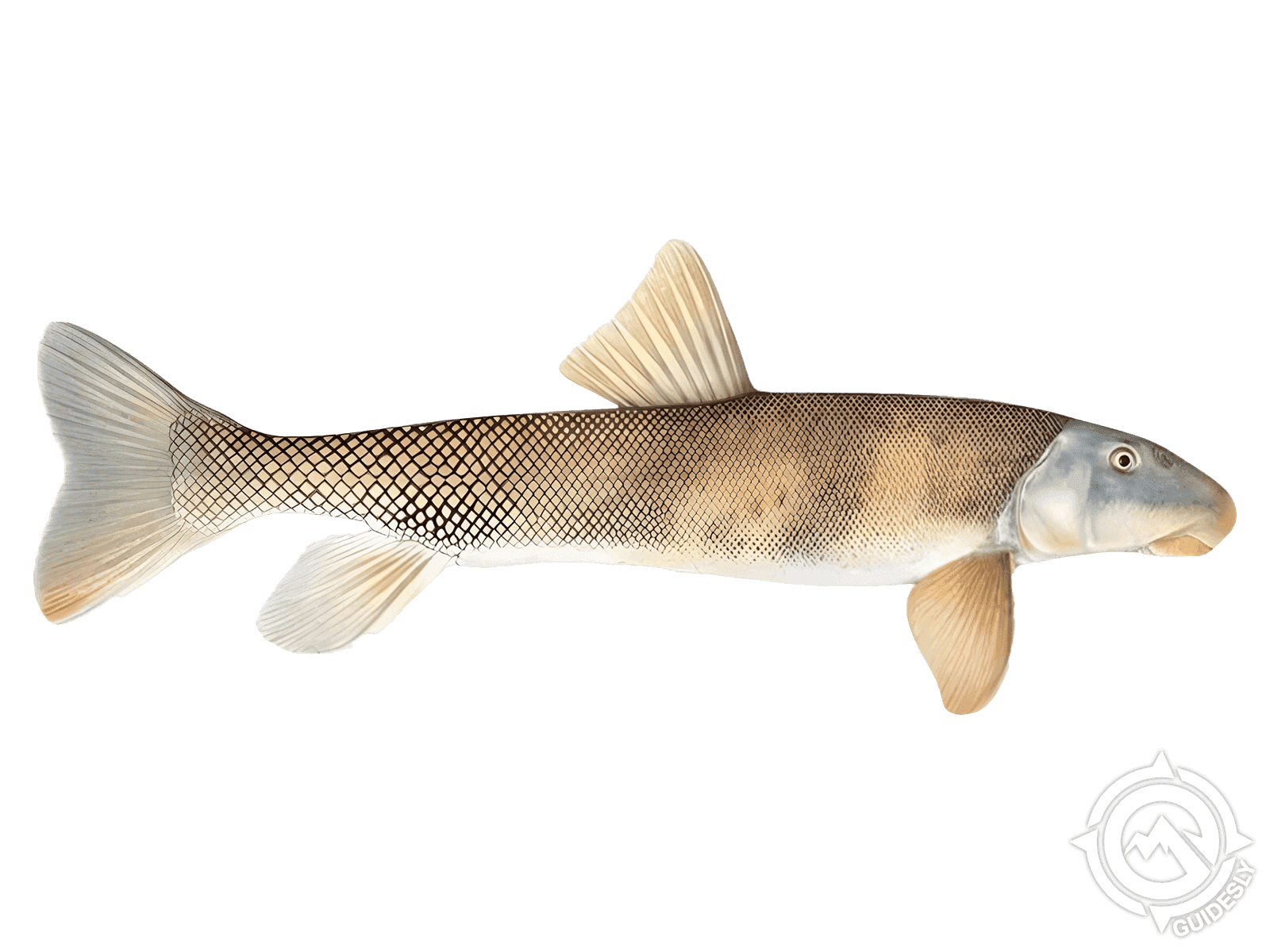Flannelmouth Sucker

Species Details
Catostomus Latipinnis
Catostomidae
Cypriniformes
freshwater
2 - 8 lbs.
19" - 26"
Flannelmouth Sucker (Catostomus latipinnis ) Fish Description
The Flannelmouth Sucker is known for its fleshy mouth, its lower lip particularly enlarged. It is covered in tiny scales but has big fins. It has quite a long and thick body that tapers down to a thinner posterior.
Its coloring can range from dark brown to greenish that fades to orange or yellow on the sides, with a lighter and almost white underside. While its coloring is already quite fascinating, it turns even a more vibrant orange during the spawning season, with the male Flannelmouth Sucker exhibiting tubercules from its anal fin to its caudal fin.
The Flannelmouth Sucker may be mistaken for the white sucker and the bluehead sucker because of how similar they look. In fact, these species have been known to hybridize with each other for survival in waters where they are not native.
Size and Diet
The Flannelmouth Sucker is quite hefty, one of the largest of its genus. It can grow to 28 inches in length and 8 pounds in weight. It can also reach 30 years of age.
The Flannelmouth Sucker is omnivorous in its feeding habits. They are known to consume whatever is at hand as riverine obligate species. They can feed on detritus, mud, and other inorganic substances, as well as planktonic organisms and algae. Their diets are also known to shift depending on the season and their size.
Interesting Facts About the Flannelmouth Sucker
- The Flannelmouth Sucker is sensitive to the water quality of its surroundings. The health of its population in the Green River and San Juan River has been designated as an indicator of its waters’ general wellbeing.
- The Flannelmouth Sucker species may not be marked as endangered, but its population has been dwindling through the years because of the various threats to its habitat. These threats include the hydroelectric dams that alter their habitats and being preyed upon by species introduced into their homes.
- The Flannelmouth Sucker is listed as a sensitive species in Nevada and a species of special concern in Utah due to its decreasing population.
- When breeding during the months of April to June when the waters reach fifty degrees in temperature, the Flannelmouth Sucker move upstream, with the females looking for a shallow rocky tributary to release their eggs. There on the rocky surface, the eggs will lie in wait to be fertilized by waterborne sperms released by the males.
- The Flannelmouth Sucker moves around a lot. It is known to travel hundreds of miles in rivers uninterrupted by dams.
Fishing Technique: How to Catch Flannelmouth Sucker
Anglers normally don’t go fishing for Flannelmouth Suckers but typically catch them when fishing for trout. They are good game fish though as they can put up a fight when caught.
To target Flannelmouth Sucker, anglers should look for moving river waters. Flannelmouth Suckers also love congregating down a current break, or any area where fast-moving water meets slower-moving waters.
As for fishing gear, anglers do not need anything particularly complicated. A light bass fishing tackle and a light spinning tackle will work fine. Attach a size 6 hook baited with nightcrawlers or a couple of worms and you’re good to go. Just make sure to add enough weight so that the bait stays at the bottom where the Flannelmouth Sucker feeds. When fly fishing for the Flannelmouth Sucker, anglers will find that using wet nymph and scud patterns and flies that look like fish eggs or worms work best.
Habitat and Distribution
The Flannelmouth Sucker is native to the freshwaters in parts of Arizona, Colorado, New Mexico, Nevada, Wyoming, Utah, and California, though it has become extinct in California, only appearing in the Californian part of the Colorado River after the species was reintroduced to the Nevada waters.
The Flannelmouth Sucker does not like small water bodies. It is normally found in larger rivers, also moving through the mouths of smaller river tributaries. Its young ones can be found in shallow waters, except when they’re not feeding. Adult Flannelmouth Suckers prefer the deep, where they can get some shading.





